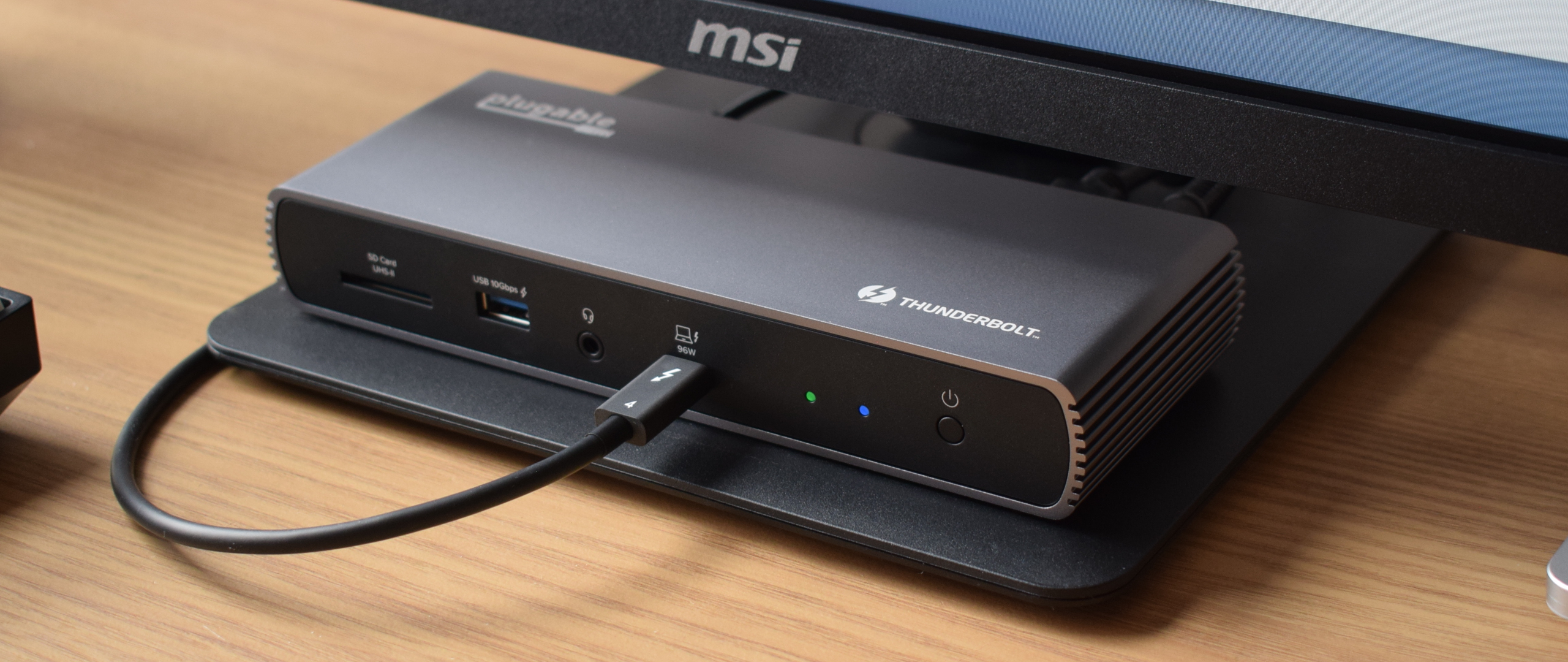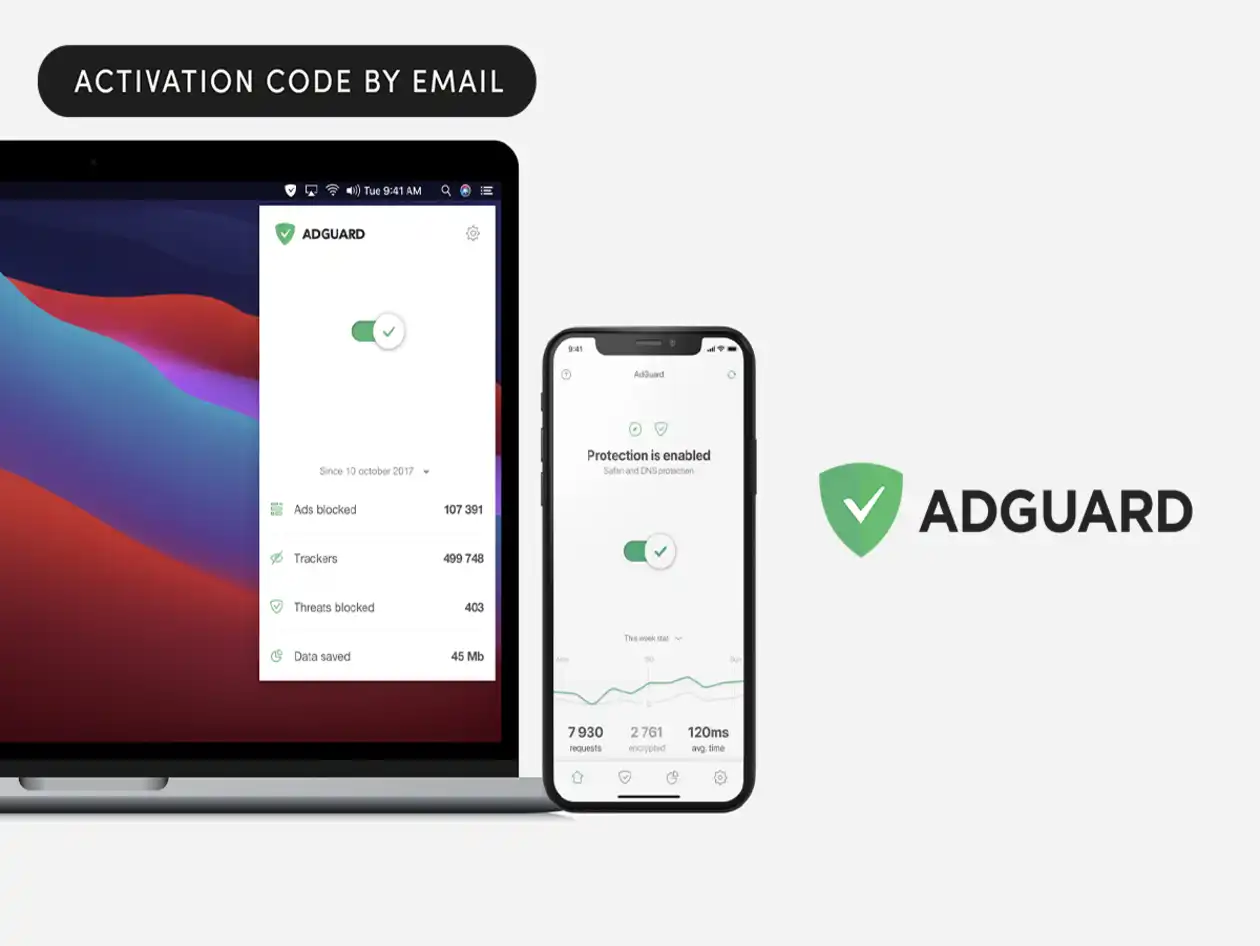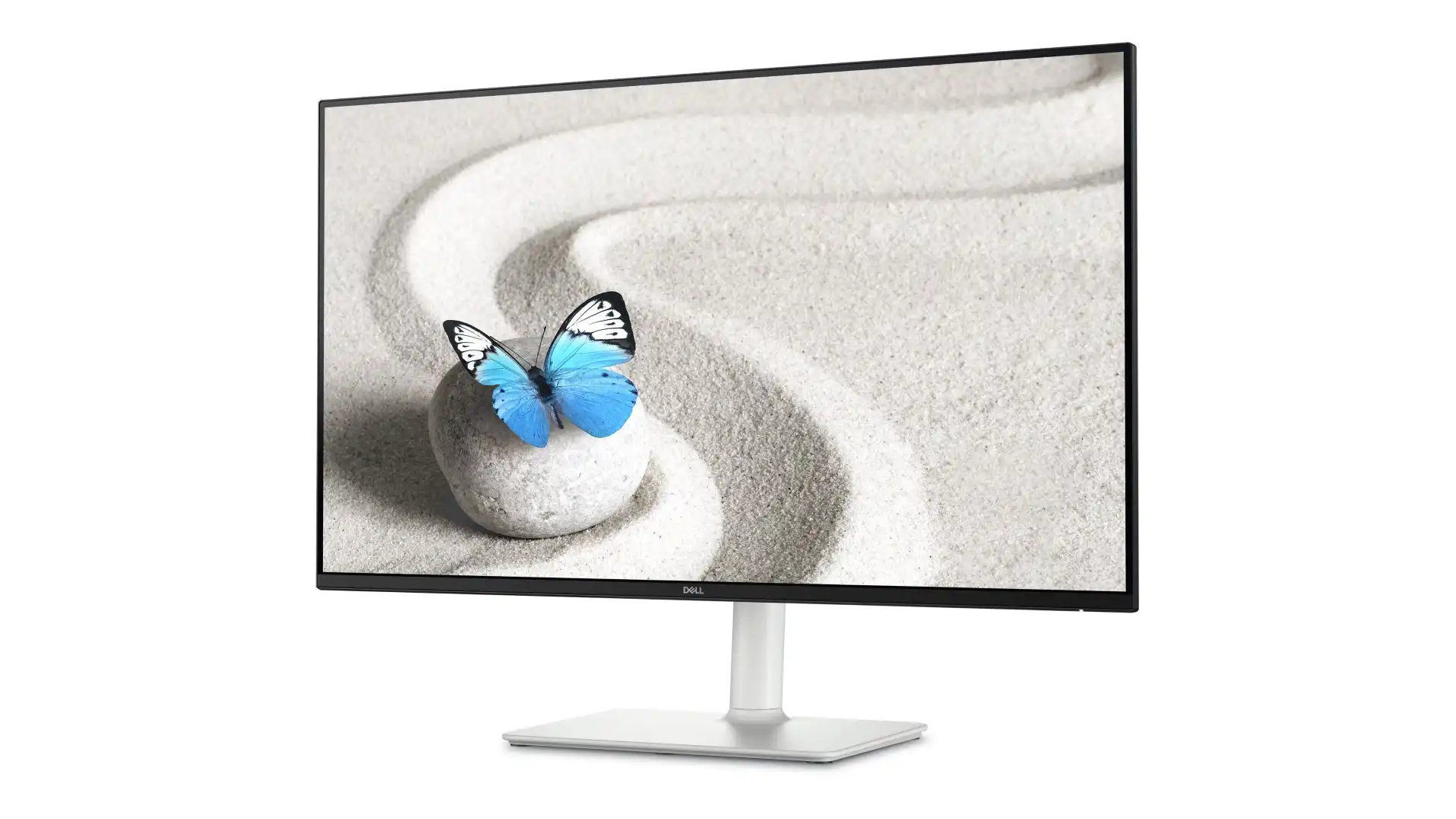Samsung’s Flex In & Out Flip concept is like a Galaxy Z Flip you can fold in both directions.
At CES 2024, I watched a Samsung representative open the shiny Flex In & Out Flip concept device and fold it in both directions. Unlike the Galaxy Z Flip 5 and other flip phones you can buy today, it folds completely backwards so that you use the phone’s 6.7-inch screen even when the device is shut.
I wasn’t allowed to bend the Flex In & Out Flip concept device myself, but it’s a standout concept from Samsung’s Display team that could provide a glimpse at where foldables are heading. Samsung Display’s entire booth was full of foldable concepts in all shapes and sizes, and it’s all part of an ongoing effort to make devices that roll, flex, bend, fold fit more interestingly into our lives.
When the Flex In & Out Flip is bent backwards, one side of the device is shorter than the other, to avoid covering the camera. The larger side was big enough to show several icons in the phone’s quick settings menu, media playback controls and the time and battery level. The phone was running a looped demo video rather than actual software, but the simulation still provided a sense of how the user interface would adapt to the phone’s movements.
The low-hanging fruit would be a more flexible Samsung Galaxy flip phone. That said, the Flex In & Out Flip is only a concept for now, so there’s no indication that the technology will ever show up in a real product just yet.
But it shows that Samsung may be thinking about ways to make its nearly 4-year-old flip phone line more versatile and potentially more useful. Samsung has shown concepts of its larger book-shaped Galaxy Z Fold-like design that can bend all the way backwards, but this is the first time it’s showing a flip phone with that capability publicly.
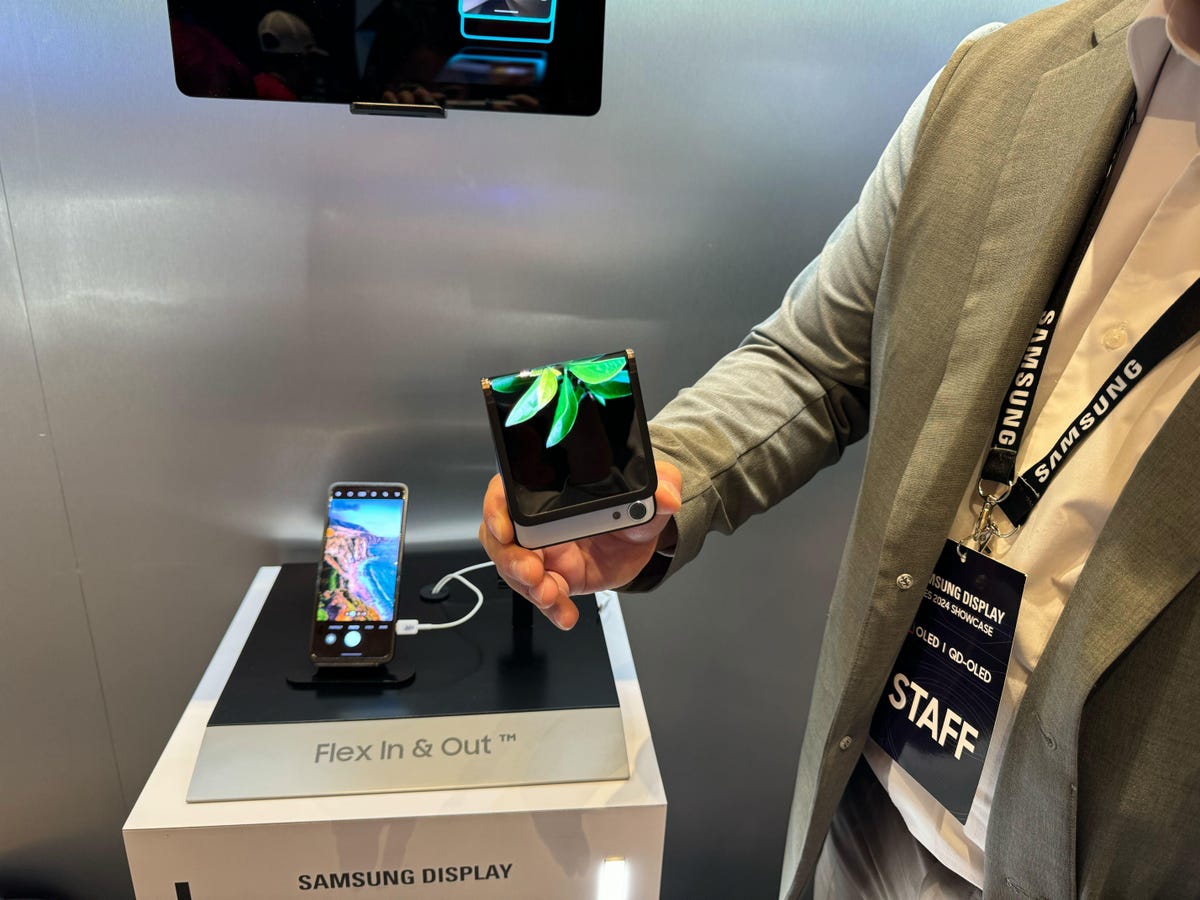
Based on the limited time I’ve had to check out the concept so far, it seems like the biggest benefit would be having one screen that can be used consistently whether the device is opened or closed. The Galaxy Z Flip 5 has a reasonably large external screen, making it much more useful for using apps and reading notifications than the Galaxy Z Flip 4 and other older models. But since it’s a separate screen, you still have to customize it to your liking and choose which apps you’d like to use on it.
I’m curious about whether using the same screen on the inside and outside could provide a more consistent experience. However, since the Flex In & Out Flip is just a concept and not a product, who knows whether I’ll ever get that answer.

The company also says it’s tested the concept’s durability by folding it in extreme temperatures ranging from -20 degrees Celsius to 60 degrees Celsius and bouncing basketballs on its foldable panels. Over the summer, CNET got a closer look at how Samsung tests the durability of its foldable phones on a visit to the company’s headquarters in South Korea.
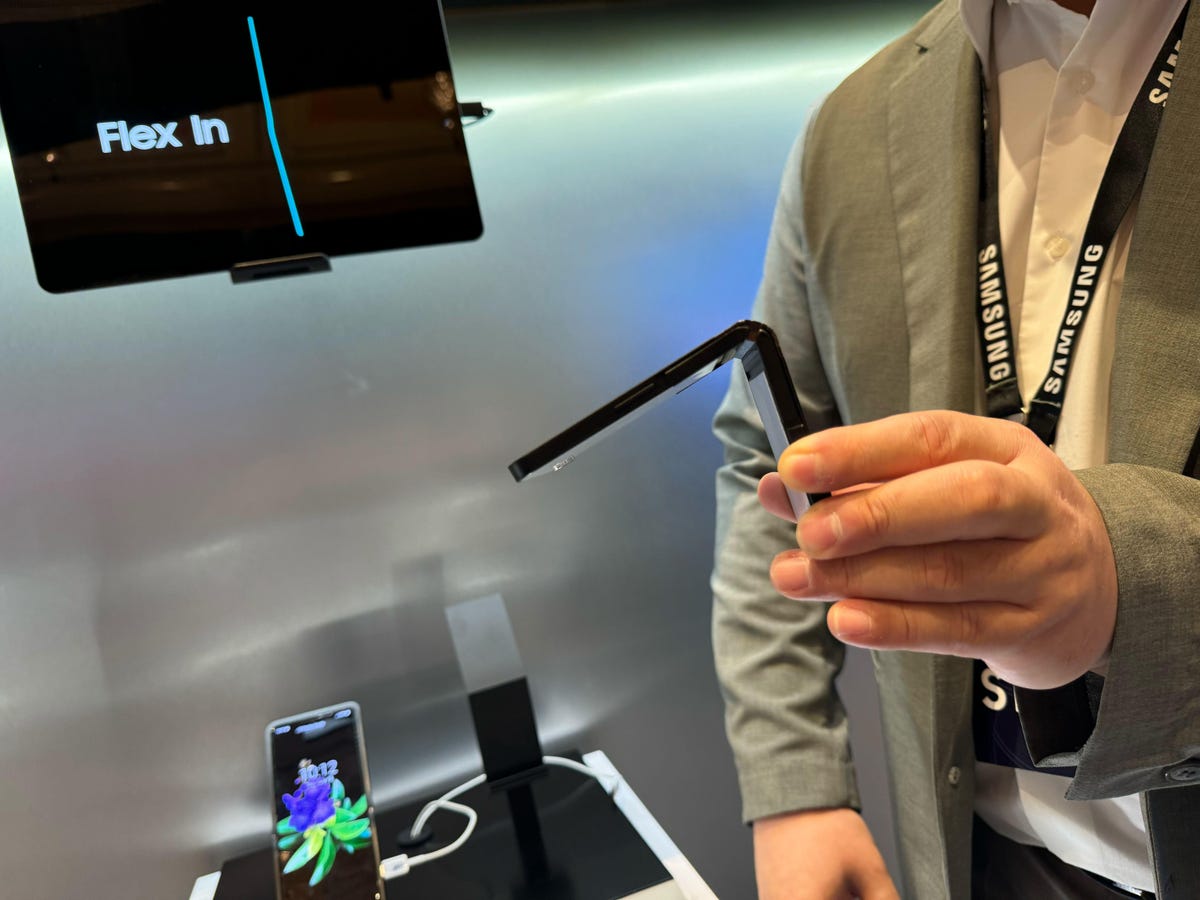
Samsung also showed several other flexible and foldable display concepts during CES, including the Flex Liple, another flip phone prototype with a display that curves around its top edge. There was also the Rollable Flex, which can expand its screen up to five times in size by unraveling like a scroll, and the company also showed new high resolution displays for mixed reality headsets.
The Galaxy Z Flip 5 and the Motorola Razr Plus, which has a similarly spacious front screen, both show the promise of having a phone with a secondary screen that can fit in the palm of your hand. The Flex In & Out Flip concept, should it ever surface in a product, feels like it could be another step in that direction.

